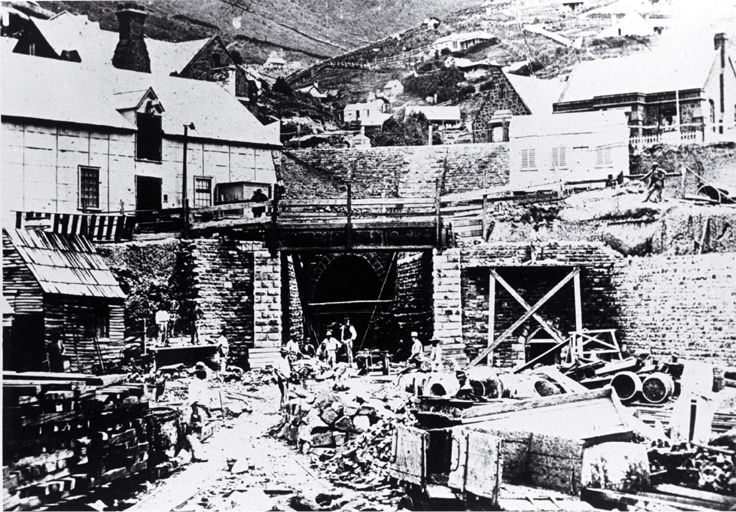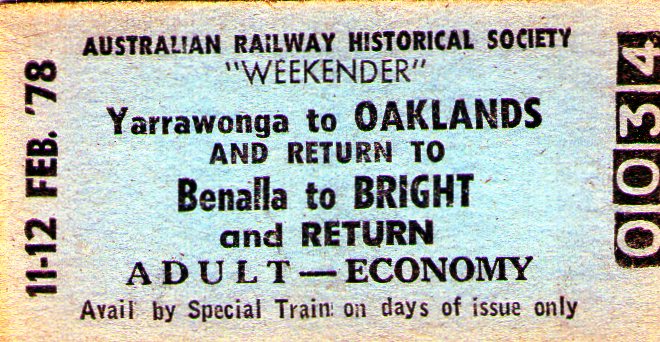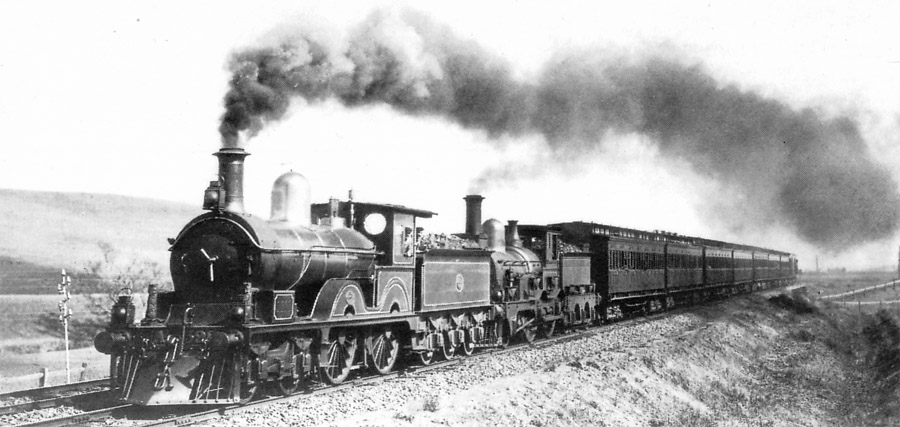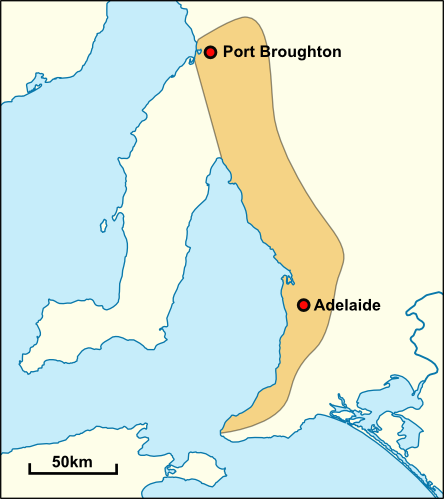|
5 Ft 3 In Gauge Railways
Railways with a track gauge of fall within the category of broad-gauge railways. , they were extant in Australia, Brazil and on the island of Ireland. History ;600 BC :The Diolkos (Δίολκος) across the Isthmus of Corinth in Greece – a grooved paved trackway – was constructed with an average gauge of . ;1840 : The Grand Duchy of Baden State Railway was constructed in 1840–1851 to gauge before being converted to in 1854–1855. ;1843 : The Board of Trade of the United Kingdom of Great Britain and Ireland, after investigating a dispute caused by diverse gauges, recommended the use of in Ireland. ;1846 : The Regulating the Gauge of Railways Act 1846 made mandatory throughout all of Ireland. ;1847 : The Swiss Northern Railway was opened as a line and converted to in 1854. ;1854 : The first Australian railway to operate steam-powered freight and passenger services, Melbourne and Hobson's Bay Railway Company, was built as a line. ;1858 : The first Brazilian ... [...More Info...] [...Related Items...] OR: [Wikipedia] [Google] [Baidu] |
Track Gauge
In rail transport, track gauge is the distance between the two rails of a railway track. All vehicles on a rail network must have Wheelset (rail transport), wheelsets that are compatible with the track gauge. Since many different track gauges exist worldwide, gauge differences often present a barrier to wider operation on railway networks. The term derives from the metal bar, or gauge, that is used to ensure the distance between the rails is correct. Railways also deploy two other gauges to ensure compliance with a required standard. A ''loading gauge'' is a two-dimensional profile that encompasses a cross-section of the track, a rail vehicle and a maximum-sized load: all rail vehicles and their loads must be contained in the corresponding envelope. A ''structure gauge'' specifies the outline into which structures (bridges, platforms, lineside equipment etc.) must not encroach. Uses of the term The most common use of the term "track gauge" refers to the transverse distance be ... [...More Info...] [...Related Items...] OR: [Wikipedia] [Google] [Baidu] |
Canterbury Provincial Railways
The Canterbury Provincial Railways was an early part of the railways of New Zealand. Built by the Canterbury Provincial government mainly to the broad gauge of , the railway reached most of the Canterbury region by the time the province was abolished in 1876. Edward Dobson, the Provincial Engineer from 1854 to 1868, was the designer and overseer. History New Zealand's first public railway was opened from Christchurch to Ferrymead in 1863. In 1867 the Ferrymead section was made redundant when the line through the Lyttelton rail tunnel to the port of Lyttelton opened. The contractors who had built the line, Holmes and Company of Melbourne, operated the trains until 31 July 1868, when the Canterbury Provincial Railways took direct control. The contractors selected the broad gauge used for the railway, as it was the same gauge in use for railways in the Colony of Victoria. The first locomotive and rolling stock were purchased from Melbourne and Essendon Railway Company, a rai ... [...More Info...] [...Related Items...] OR: [Wikipedia] [Google] [Baidu] |
Mildura Railway Line
The Mildura railway line is a heavy rail line in northwestern Victoria, Australia. The line runs from Yelta station to Ballarat station via the settlements of Mildura, Ouyen and Maryborough in an approximate south-southeasterly direction. Initial sections of the line opened from Ballarat in 1874 and the line reached Mildura in 1903. The line is primarily utilised by freight services. V/Line passenger services also operate on the line between Maryborough and Ballarat. History The Mildura line was opened from Ballarat to Creswick, Clunes, Maryborough and Dunolly in 1874 and 1875, and extended to St Arnaud in 1878, Donald in 1882, Birchip in 1893, Woomelang in 1899, Ouyen, Red Cliffs and Mildura in 1903, Merbein in 1910 and Yelta in 1925. A line was opened from Ballarat to Waubra in the 1880s. It closed in the 1960s. A branch line was built from North Creswick to Daylesford in 1887, connecting with the line from Carlsruhe. It had stations at Broomfield ... [...More Info...] [...Related Items...] OR: [Wikipedia] [Google] [Baidu] |
Oaklands Railway Line, Victoria
The Oaklands railway line is a freight-only railway line in north-eastern Victoria (Australia), Victoria, Australia. The line branches from the main North East railway line, North East railway at Benalla railway station, Benalla station and runs across the Victoria-New South Wales border to the town of Oaklands, New South Wales. History The first section of line opened in 1883 as a branch line to St James, Victoria, St James, at the same time as the extension of the North East railway line, main line to Albury railway station, Albury in New South Wales. In 1886, the line was extended another to Yarrawonga, on the southern bank of the Murray River, which formed the colonial and, later, the state boundary between Victoria (Australia), Victoria and New South Wales. Under the 1922 Border Railways Act, the line was extended another 61 kilometres to Oaklands, New South Wales, where it met the existing Oaklands railway line, New South Wales, New South Wales branch line, and Oakla ... [...More Info...] [...Related Items...] OR: [Wikipedia] [Google] [Baidu] |
North East Railway Line
The North East railway line is a railway line in Victoria (Australia), Victoria, Australia. The line runs from Southern Cross railway station on the western edge of the Melbourne Melbourne City Centre, central business district to Albury railway station in the border settlement of Albury-Wodonga, serving the cities of Wangaratta and Seymour, Victoria, Seymour, and smaller towns in northeastern Victoria. The railway line is both standard gauge and 5 ft 3 in gauge railways, broad gauge. It originally was built as broad gauge the entire length, but another track was built as standard gauge between and , with construction of the standard gauge track commencing in November 1959 and completed in January 1962, completing the Sydney–Melbourne rail corridor, Sydney-Melbourne standard gauge railway. Between 2008 and 2010, the broad gauge track between Seymour and Albury was finally converted to be the line's second standard gauge track. The original section between Southern Cross and ... [...More Info...] [...Related Items...] OR: [Wikipedia] [Google] [Baidu] |
Standard-gauge Railway
A standard-gauge railway is a railway with a track gauge of . The standard gauge is also called Stephenson gauge (after George Stephenson), international gauge, UIC gauge, uniform gauge, normal gauge in Europe, and SGR in East Africa. It is the most widely used track gauge around the world, with about 55% of the lines in the world using it. All high-speed rail lines use standard gauge except those in Russia, Finland, Uzbekistan, and some line sections in Spain. The distance between the inside edges of the heads of the rails is defined to be 1,435 mm except in the United States, Canada, and on some heritage British lines, where it is defined in U.S. customary/ British Imperial units as exactly "four feet eight and one half inches", which is equivalent to 1,435.1mm. History As railways developed and expanded, one of the key issues was the track gauge (the distance, or width, between the inner sides of the rail heads) to be used, as the wheels of the rolling stock (locomoti ... [...More Info...] [...Related Items...] OR: [Wikipedia] [Google] [Baidu] |
Melbourne–Adelaide Rail Corridor
The Melbourne–Adelaide rail corridor consists of the long standard-gauge main line between the Australia, Australian state capitals of Melbourne, Victoria (Australia), Victoria and Adelaide, South Australia, and the lines immediately connected to it. Most of its traffic is freight train, freight; the only passenger train along the entire route is the twice-weekly passenger service ''The Overland'', operated by Journey Beyond. History From the 1850s, the Victorian Railways and South Australian Railways broad-gauge networks were established and expanded. The South Australian main line – the Adelaide-Wolseley railway line, Adelaide-Wolseley line – was connected to the Victorian system at Serviceton railway station, Serviceton in 1887. This was the first single-gauge link between two History of Australia#Establishment of further colonies, Australian colonies; other connections were only constructed after another 50 years because of the failure of the colonies (later, Feder ... [...More Info...] [...Related Items...] OR: [Wikipedia] [Google] [Baidu] |
New South Wales
New South Wales (commonly abbreviated as NSW) is a States and territories of Australia, state on the Eastern states of Australia, east coast of :Australia. It borders Queensland to the north, Victoria (state), Victoria to the south, and South Australia to the west. Its coast borders the Coral Sea, Coral and Tasman Seas to the east. The Australian Capital Territory and Jervis Bay Territory are Enclave and exclave, enclaves within the state. New South Wales' state capital is Sydney, which is also Australia's most populous city. , the population of New South Wales was over 8.3 million, making it Australia's most populous state. Almost two-thirds of the state's population, 5.3 million, live in the Greater Sydney area. The Colony of New South Wales was founded as a British penal colony in 1788. It originally comprised more than half of the Australian mainland with its Western Australia border, western boundary set at 129th meridian east in 1825. The colony then also includ ... [...More Info...] [...Related Items...] OR: [Wikipedia] [Google] [Baidu] |
Victoria (Australia)
Victoria, commonly abbreviated as Vic, is a States and territories of Australia, state in southeastern Australia. It is the second-smallest state (after Tasmania), with a land area of ; the second-most-populated state (after New South Wales), with a population of over 7 million; and the most densely populated state in Australia (30.6 per km2). Victoria's economy is the List of Australian states and territories by gross state product, second-largest among Australian states and is highly diversified, with service sectors predominating. Victoria is bordered by New South Wales to the north and South Australia to the west and is bounded by the Bass Strait to the south (with the exception of a small land border with Tasmania located along Boundary Islet), the Southern Ocean to the southwest, and the Tasman Sea (a marginal sea of the South Pacific Ocean) to the southeast. The state encompasses a range of climates and geographical features from its temperate climate, temperate coa ... [...More Info...] [...Related Items...] OR: [Wikipedia] [Google] [Baidu] |
Melbourne
Melbourne ( , ; Boonwurrung language, Boonwurrung/ or ) is the List of Australian capital cities, capital and List of cities in Australia by population, most populous city of the States and territories of Australia, Australian state of Victoria (state), Victoria, and the second most-populous city in Australia, after Sydney. The city's name generally refers to a metropolitan area also known as Greater Melbourne, comprising an urban agglomeration of Local Government Areas of Victoria#Municipalities of Greater Melbourne, 31 local government areas. The name is also used to specifically refer to the local government area named City of Melbourne, whose area is centred on the Melbourne central business district and some immediate surrounds. The metropolis occupies much of the northern and eastern coastlines of Port Phillip Bay and spreads into the Mornington Peninsula, part of West Gippsland, as well as the hinterlands towards the Yarra Valley, the Dandenong Ranges, and the Macedon R ... [...More Info...] [...Related Items...] OR: [Wikipedia] [Google] [Baidu] |
Adelaide
Adelaide ( , ; ) is the list of Australian capital cities, capital and most populous city of South Australia, as well as the list of cities in Australia by population, fifth-most populous city in Australia. The name "Adelaide" may refer to either Greater Adelaide (including the Adelaide Hills) or the Adelaide city centre; the demonym ''Adelaidean'' is used to denote the city and the residents of Adelaide. The Native title in Australia#Traditional owner, traditional owners of the Adelaide region are the Kaurna, with the name referring to the area of the city centre and surrounding Adelaide Park Lands, Park Lands, in the Kaurna language. Adelaide is situated on the Adelaide Plains north of the Fleurieu Peninsula, between the Gulf St Vincent in the west and the Mount Lofty Ranges in the east. Its metropolitan area extends from the coast to the Adelaide Hills, foothills of the Mount Lofty Ranges, and stretches from Gawler in the north to Sellicks Beach in the south. Named in ho ... [...More Info...] [...Related Items...] OR: [Wikipedia] [Google] [Baidu] |
Australia
Australia, officially the Commonwealth of Australia, is a country comprising mainland Australia, the mainland of the Australia (continent), Australian continent, the island of Tasmania and list of islands of Australia, numerous smaller islands. It has a total area of , making it the list of countries and dependencies by area, sixth-largest country in the world and the largest in Oceania. Australia is the world's flattest and driest inhabited continent. It is a megadiverse countries, megadiverse country, and its size gives it a wide variety of landscapes and Climate of Australia, climates including deserts of Australia, deserts in the Outback, interior and forests of Australia, tropical rainforests along the Eastern states of Australia, coast. The ancestors of Aboriginal Australians began arriving from south-east Asia 50,000 to 65,000 years ago, during the Last Glacial Period, last glacial period. By the time of British settlement, Aboriginal Australians spoke 250 distinct l ... [...More Info...] [...Related Items...] OR: [Wikipedia] [Google] [Baidu] |






